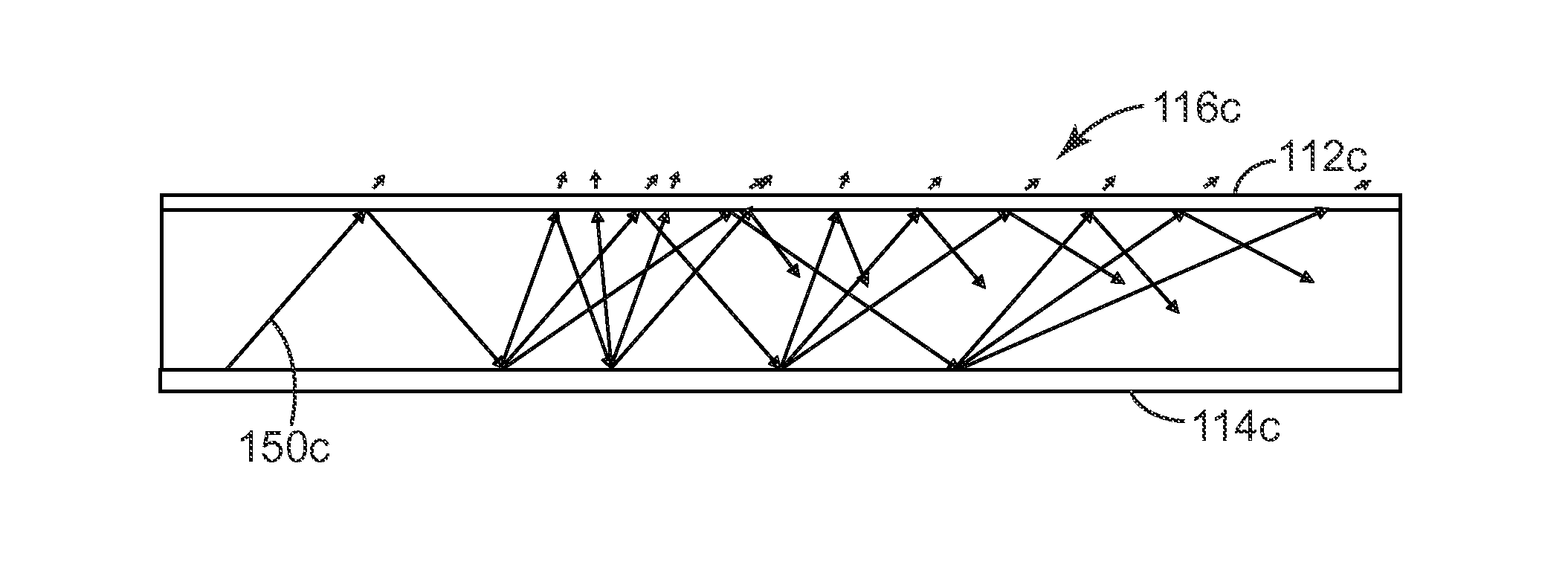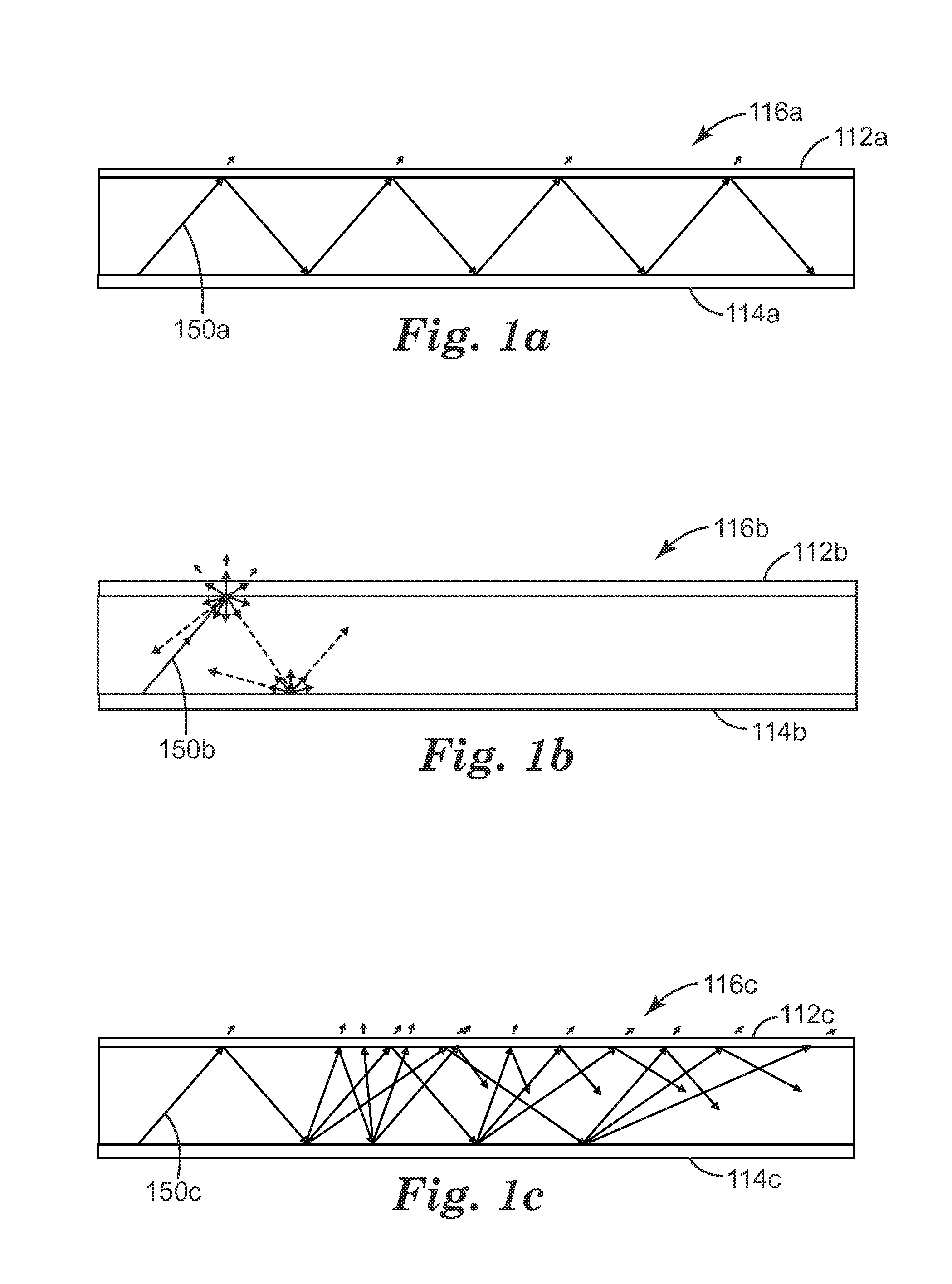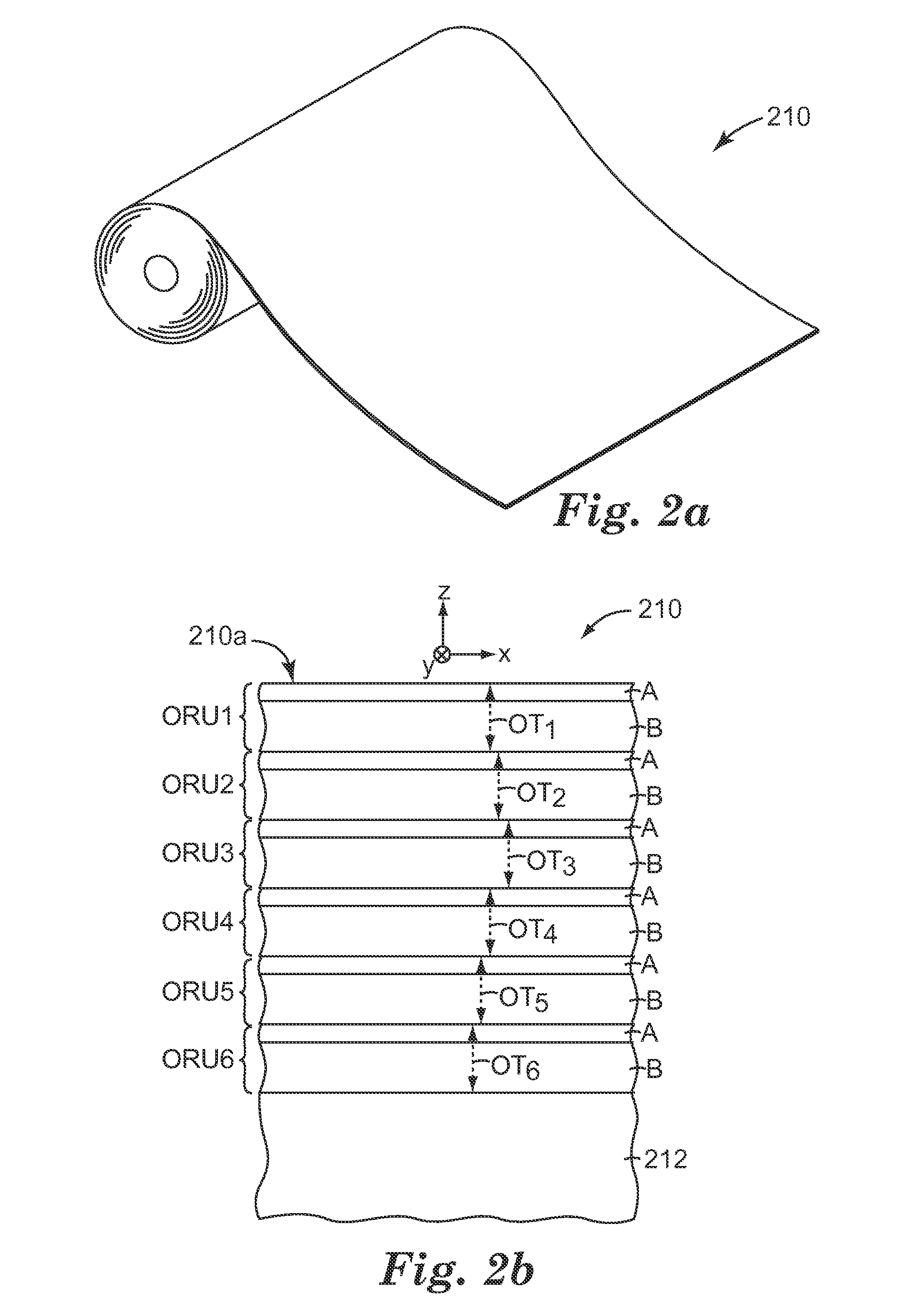Wide band semi-specular mirror film incorporating nanovoided polymeric layer
- Summary
- Abstract
- Description
- Claims
- Application Information
AI Technical Summary
Benefits of technology
Problems solved by technology
Method used
Image
Examples
example 1
[0196]50 g of methanol and 15 g of TS 530 were charged to a 400 ml plastic laboratory beaker equipped with an air driven 3-blade paddle stirrer. The TS 530 powder was added to the stirred methanol in small portions to aid in dispersion. The agitator was at first run slowly until the particles were wetted by the solvent. The mixture became very viscous and about 50 g of additional methanol was added slowly. It was necessary to use a wooden spatula to repeatedly push the particles that adhered to the side of the flask back into the mixture. Once all the particles were immersed in the solvent, the agitation rate was increased and an additional small amount of methanol was added. The solids content of the final mixture was found to be 14%. During storage, the particle mixture was placed on a standard laboratory shaker set at low speed to ensure the particles did not settle out of the mixture. Using the same mixing apparatus, 30 g of 10% FC 2145 in methanol was charged to a 200 ml plasti...
examples 2-6
[0198]Examples 2-6 were prepared in the same manner as Example 1 but the solvent and resins were changed as shown in Table 1.
examples 7-8
[0199]The coating mixtures used to prepare the specimens of Examples 7 and 8 were prepared from mixtures of PVA-235 and the fumed silicon oxide dispersion Cab-O-Sperse PG002™. Poly Cup 172™ (PC 172) was used as the crosslinker in the formulation. PC 172 is a polyamide-epichlorohydrin polymer available as a 12% solids solution in water from Hercules Corp. of Newark, Del. 100 g of deionized water, 0.5 ml of ammonium hydroxide (30 wt %) and 2.0 g of PC 172 (2.5 wt % based on PVA content) were added to an 800 ml plastic beaker and mixed thoroughly with a stirring rod. 300 g of Cab-O-Sperse PG002 fumed silicon oxide dispersion (20 wt % in water) and 2.0 g of surfactant Tergitol Min-Foam 1X™ (Dow Chemical of Midland, Mich.) (10 wt % in water) were then added. Once these were well mixed, 138.8 g of 7.2 wt % PVA 235 solution and another 160 g of deionized water were added to the mixture followed by additional mixing with a stirring rod. The coating mixture was transferred to a 1 L, 1-neck r...
PUM
 Login to View More
Login to View More Abstract
Description
Claims
Application Information
 Login to View More
Login to View More - Generate Ideas
- Intellectual Property
- Life Sciences
- Materials
- Tech Scout
- Unparalleled Data Quality
- Higher Quality Content
- 60% Fewer Hallucinations
Browse by: Latest US Patents, China's latest patents, Technical Efficacy Thesaurus, Application Domain, Technology Topic, Popular Technical Reports.
© 2025 PatSnap. All rights reserved.Legal|Privacy policy|Modern Slavery Act Transparency Statement|Sitemap|About US| Contact US: help@patsnap.com



